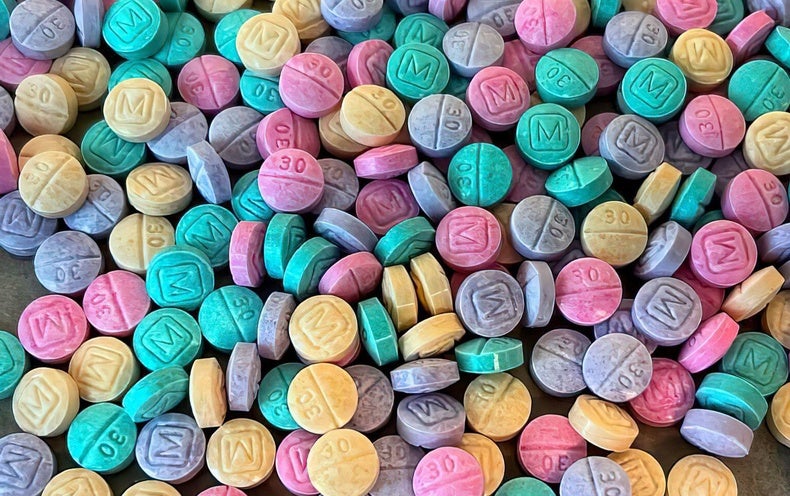
It’s a problem that has been around for as long as people have been drinking alcohol and using drugs: substance abuse. And it’s a problem that doesn’t seem to be going away soon. In fact, according to the National Institute on Drug Abuse, “drug addiction is a chronic, relapsing brain disease characterized by compulsive drug seeking and use, despite harmful consequences.” So what are your options when it comes to substance abuse treatment?
There are several approaches to substance abuse treatment, depending on the person’s needs and preferences. Some common approaches include:
Inpatient or Residential Treatment
Inpatient or residential treatment is one of the most common approaches to substance abuse treatment. It involves living in an addiction treatment center for a specific period, usually 30 to 90 days. It depends on the intensity of treatment needed and any co-occurring mental health disorders.
During inpatient treatment, patients receive around-the-clock care and support from staff members who are experienced in treating addiction. This approach can benefit people needing intensive care and supervision to overcome addiction.
Some of the benefits of inpatient treatment include:
- A safe and supportive environment where patients can focus on their recovery without distractions
- Treatment that is tailored specifically to the individual’s needs
- The opportunity to build relationships with other people who are also recovering from addiction
- Supportive services such as therapy, counseling, and education
Outpatient Treatment
Outpatient treatment is one of the most common types of substance abuse treatment. It can be a great option for people with mild to moderate addiction problems. Outpatient treatment allows you to live at home while receiving treatment from a counselor or therapist. There are several different types of outpatient treatment, including individual counseling, group counseling, and family therapy.

There are several benefits to outpatient treatment:
- It is less expensive than inpatient treatment.
- It allows you to continue working or going to school while receiving treatment.
- It provides more flexibility than inpatient treatment; you can choose the times and days that work best for you.
- Outpatient treatment can be just as effective as inpatient treatment for some people.
- It offers an opportunity for family members to participate in the recovery process.
However, there are also some drawbacks to outpatient treatment:
- It can be challenging to stick with the program if you are not motivated to get sober.
- There is a greater risk of relapse if you do not attend all of your sessions.
- Outpatient therapy may not be appropriate for people with severe addiction problems or mental health issues.
12-Step Programs
The 12-step program is a self-help program that has been around for over 75 years. It was created by Alcoholics Anonymous (AA) and is now used by many different types of addiction programs. The 12 steps are guidelines that help people recover from their addictions.
The 12-step program is based on the idea that people are powerless over their addictions and need to turn their lives over to a higher power. This can be God, but it can also be anything that the person believes in, such as the AA group, a friend, or a family member.
The first step is admitting that you have a problem and need help. The second step is accepting responsibility for your actions. The third step is making amends with the people you have hurt. The fourth step is learning to live without alcohol or drugs. And the fifth step is helping others who are struggling with addiction.
These steps are repeated repeatedly until the person reaches Step 12, which is maintaining sobriety long-term. Some people find the 12-step program helpful and practical, while others may not believe in its principles or feel uncomfortable with the focus on a higher power.
Medication-Assisted Treatment (MAT)
Medication-assisted treatment is a type of treatment that combines medication with counseling and behavioral therapy to treat substance abuse disorders, particularly opioid addiction. Examples of medications used in MAT include methadone, buprenorphine, and naltrexone.
MAT can be helpful for those who struggle with strong cravings and withdrawal symptoms, as the medication can help manage those symptoms and make it easier to focus on recovery.
It’s important to note that medication-assisted treatment should always be combined with counseling and therapy to be effective.
There are private, and public MAT programs and the cost varies depending on the program. Some insurance plans will cover part or all of the costs of MAT.
Other Self-Help Programs
In addition to the 12-step program, a variety of other self-help programs are available for those struggling with substance abuse. These include SMART Recovery, Women for Sobriety, and LifeRing. Each program has its approach and principles, so it’s crucial to find one that aligns with your beliefs and goals.
It’s also important to remember that self-help programs are not a substitute for professional treatment or therapy. They can be helpful as an additional support system but should not be relied on as the sole recovery method.
Therapy and Medication
There are several different therapies available for those struggling with substance abuse disorders. Some of the most common therapies include cognitive-behavioral therapy (CBT), motivational interviewing, and family therapy.
Cognitive-behavioral therapy is a type of therapy that helps people change their thoughts and behaviors related to addiction. CBT can help identify triggers and cravings and teach coping skills to manage them.
Motivational interviewing is counseling that helps people find their reasons for wanting to get sober. It focuses on building self-motivation and assisting people in developing healthy habits.
Family therapy is often recommended for those who have addiction problems in their family. Family therapy can help improve communication among family members, identify patterns of behavior that contribute to addiction and provide support for loved ones during recovery.
Medication may also be an essential part of treatment for some people. Several medications can be used to treat substance abuse disorders, including buprenorphine, naltrexone, and disulfiram. Working with a doctor or therapist is critical to find the right medication for your individual needs.
It’s important to remember that there is no one-size-fits-all approach to substance abuse treatment. Finding the right fit for you or your loved one may take some trial and error. And it’s also essential to seek help as soon as possible, as addiction can seriously affect health, relationships, and overall well-being. If you or someone you know struggles with substance abuse, don’t hesitate to seek help. There are resources available and treatment options that can lead to a successful recovery.

























































